A long time ago when we lived in a house with a big kitchen window at the front, Tom drew a sketch for “Jane Brocket Stors” [sic]. He had a plan for me to use the window as both shop front and serving counter to sell rock buns, oaty biscuits, flapjacks, and fairy buns iced in lurid colours (ie all the things I used to bake for them when they came home from school). I loved the idea even though it never became a reality - the fact that we were at the end of a no-through road and behind a huge yew hedge might have had something to do with it.
[oaty biscuits]
My enthusiasm for this and many other dream home-working scenarios comes from the fact that I’ve worked from home since I turned thirty. In the space of seven years after university I worked for three huge, multinational companies and one smaller UK business despite the fact that I knew from the outset - indeed, from a very early age - that I was never cut out for corporate life and office politics. This is not to say that I disliked travelling to Moscow and all over Europe, staying in five-star hotels, and racking up ridiculous expenses (we all did); it was a pretty amazing time for someone in their twenties. But in the end I couldn’t face another plane journey, another horrible boss, another interminable marketing meeting, so I left to study for the Master of Wine exams and go freelance in the wine trade. The best thing I ever did, work-wise.
So WFH is something I’m very used to, and I’m always interested in how others do it, and how living spaces and work places can overlap or be one and the same. I was delighted to find out that the tradition in the Potteries of selling Staffordshire oatcakes through the sash window of a front room or kitchen was very close to Tom’s idea. One of these was the famous Hole in the Wall (before a hole in the wall meant a cash machine) which kept going until recently (I’m not sure if it’s still in operation). It just delights me to know that people buy/bought freshly made oatcakes through a house window. Here in Cambridge we have a nice variation on the theme: I buy bread from a baker who makes loaves in her home kitchen twice a week and sells them from her front door (good addition to my doorstep activity list).
[The Sea Shell]
The Sea Shell fish and chip shop I worked in as a teenager was in the converted front room of a terraced house, with a tiny dining room behind, a kitchen, and a side alley for peeling potatoes. Nevertheless, even I was flabbergasted when I saw the immense, cast-iron fish frying range (c1915-20) with decorative trim and ceramic tiles in St Fagan’s Museum; this 448 kg mega-fryer came from Mrs Tompkins’s terraced house in Llangynwyd, Vale of Glamorgan, where she made fish and chips from 1947 to 1981 to sell from her front room. Now, I know what it’s like to come home from a single Saturday chippy shift with my clothes smelling to high heaven, but I can’t imagine what it would be like to have that permanently throughout the entire house. Well, I can. Not nice.
One of the multinationals I worked for was Courtaulds in Coventry, a place once renowned for silk-ribbon weaving businesses, especially Cash’s, now better known for name tapes. Courtaulds dominated the Foleshill area of the city, to the point that I had no idea that round the corner and along the canal were these amazing weavers’ houses (1857) on Cash’s Lane, part of Cash’s Model Factory development which aimed to maintain the independence of the individual worker within the factory system (it didn’t last long).
[Westminster Fire Station (1906)]
The wine trade proved complicated without childcare - tastings and school times don’t align well, as they say - so I went back to university to do an MA in Victorian Art & Culture. Aside from the weird brilliance of Dickens and the plain weirdness of the Pre-Raphaelites, one of the most interesting things I learned was that people live above fire stations. Who knew that there are flats for ordinary people, not necessarily fire-fighters, above lots of fire stations? I seem to remember that the lecturer who told us this lived above Westminster Fire Station; this discovery totally changed the way I look at fire stations to this day (I always wonder if they let the engines creep out quietly at night and then go full blast on the sirens once well away from the sleepers).
[Shoreditch Fire Station (1965) - brilliant Brutalism and bells]
Even the ultra-modern fire station (2015) in Cambridge is part of a residential complex with 99 flats. (I really feel it should be 999 flats.)
My ideal WFH/living-in-a-work-place location, though, would be a railway station because I’m an old romantic about the railways, the multitude of roles they have played in local and national life, and especially the beautiful buildings.
[Alton Station]
Alton Station (1849) was the very first Landmark Trust place we stayed in in 1996. The accommodation then was just the three-storey station master’s house, but now it’s expanded into the waiting rooms and ticket office and is, I imagine, an even more wonderful place to stay. It was built to serve Alton Towers when Alton Towers was a stately home which opened its grounds to the paying public in the 1860s. By the 1890s it attracted huge crowds of day-trippers and in its heyday the station took 12-coach excursion trains from the Potteries. Today it’s less lively on the platform, but you can hear the screams from terrifying rides such as Nemesis and Oblivion as you sit on the bench with a cup of tea and a copy of The Railway Children.
[2021]
It’s also possible to stay in a Station Master’s house on the Settle-Carlisle Railway so that you can do one of the best train journeys in the world ad infinitum/nauseam. We’ve only done it the once, in 2021, me following a guide to every cutting, embankment, station and structure along the line, and totally spoilt for choice when deciding which station I’d want to live in (provided it was very well insulated and warm - it’s breezy up there).
[The Station Agent’s House on the very far right in 1831]
The Landmark Trust also has the historic, just-opened Station Agent’s House (1830) in Manchester which I saw recently when coming back on the train from Dewsbury, Yorkshire, where a mug of tea plus buttered fruit scone in a cafe opposite the market cost £2.65, while here a coffee in Cambridge costs £4.40. Just saying. Also, I’m reading Less by Patrick Grant after seeing him last weekend interviewed by the brilliant Alex Clark. My goodness he is so good and clear on the many problems of the post-industrial textile towns of Lancashire and Yorkshire. Anyway, I digress, so back to the trains: the Station Agent’s House is squeezed in between a myriad of lines and viaducts and bridges making it utter bliss for train-spotters and railway buffs who are hard of hearing/unbothered by train noises.
Of course, here in Cambridge the colleges are full of work places doubling as living places. I don’t know how many tutors and academic staff still actually live in sets of beautiful old rooms overlooking ancient courts and keep of the grass signs like EM Forster (above) and Dadie Rylands who had avant-garde panels painted by Duncan Grant and Vanessa Bell at King’s College, but I do think it must be very hard to leave these surroundings and strike out into the real world,
except to get a Fitzbillies Chelsea Bun for tea.
[photo by Mike McCartney of John Lennon and Paul McCartney working on ‘I Saw Her Standing There’ in Forthlin Road, 1962]
But what better inspiration and role-modelling for successful WFH could there be than John and Paul writing early Beatles’ songs in the front room of 20 Forthlin Road?
And here’s the photo hanging in the very same room, seen on a visit last year.
Happy Sunday!



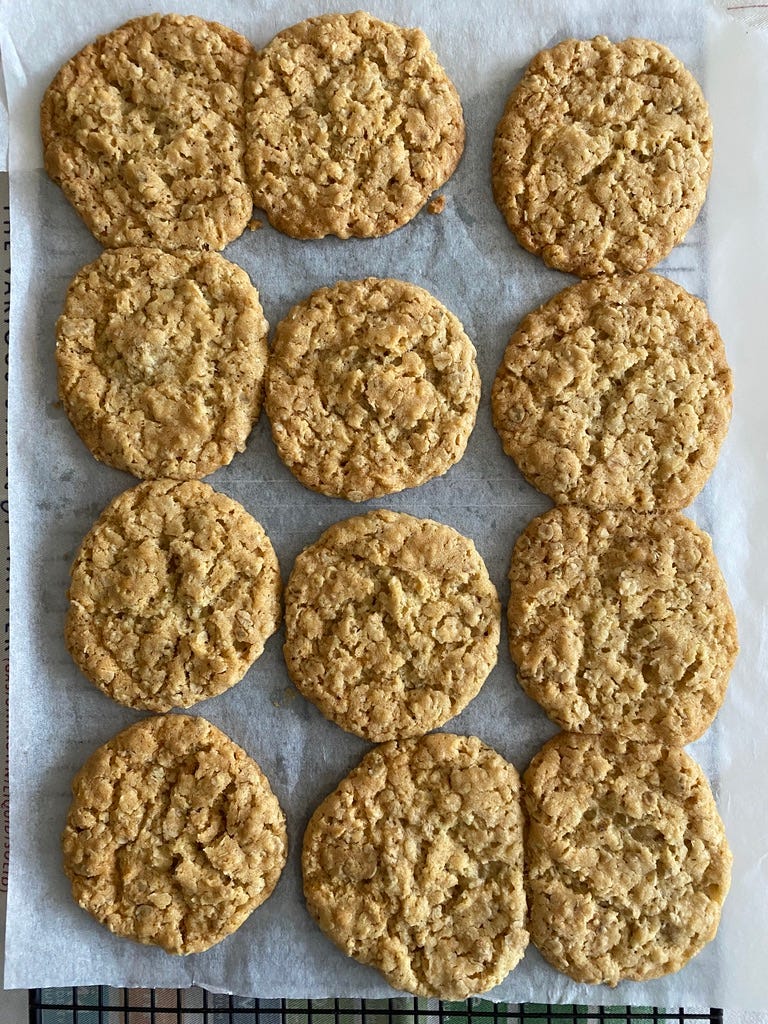
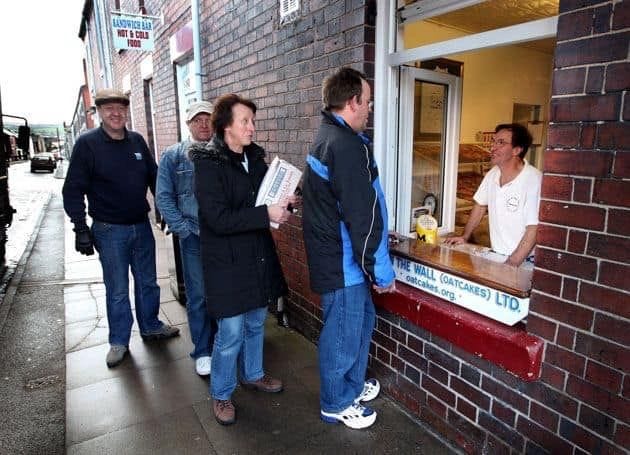

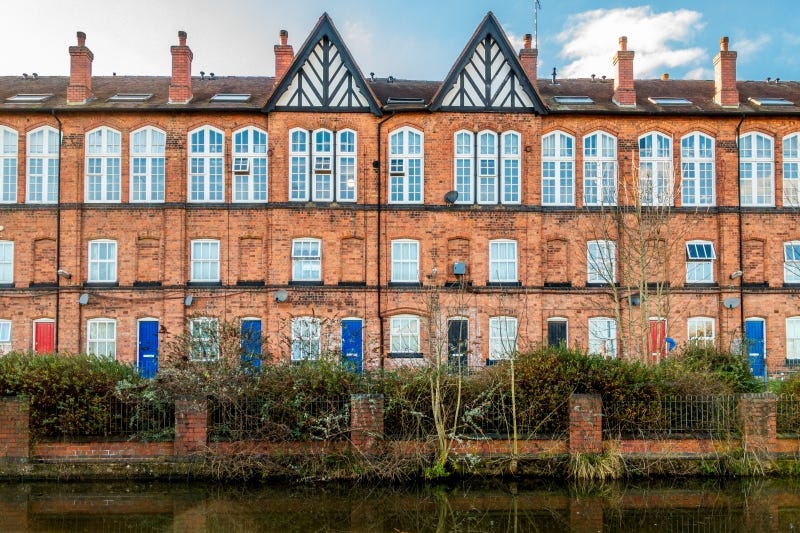

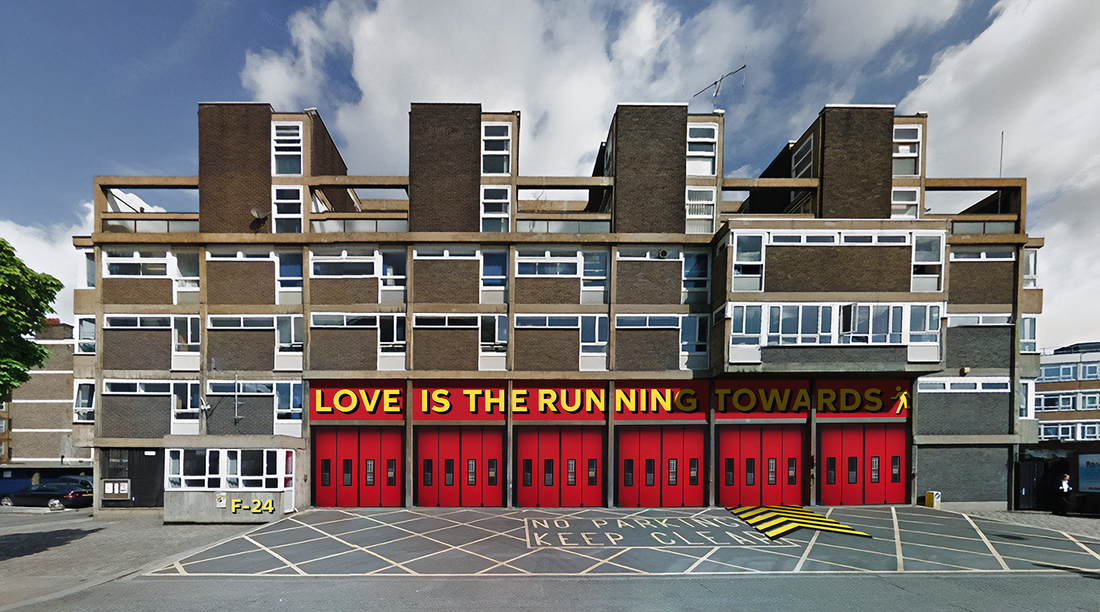

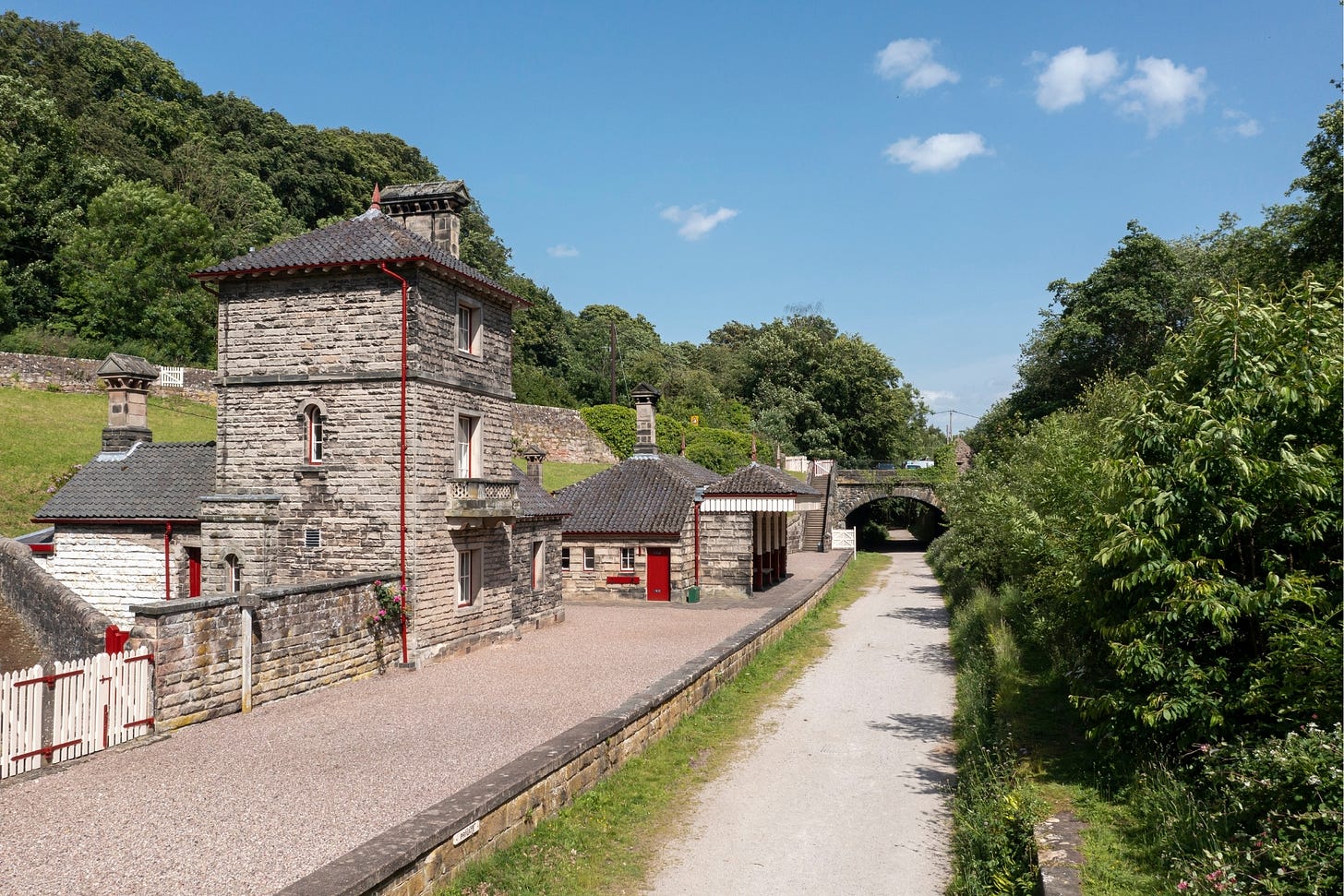
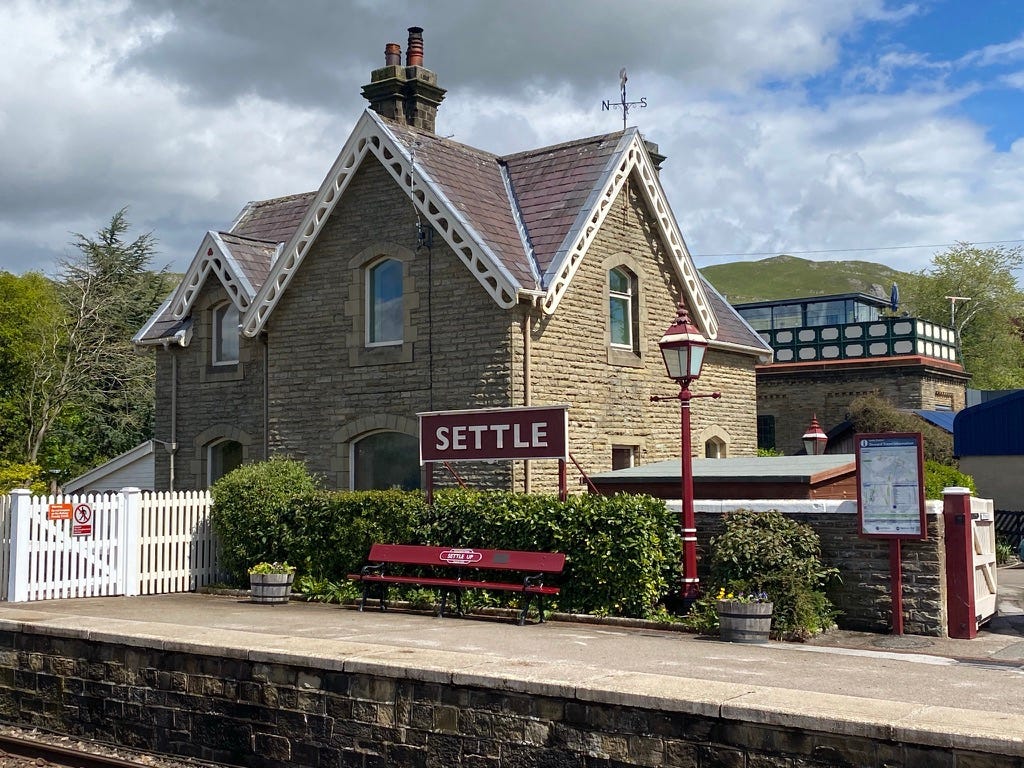
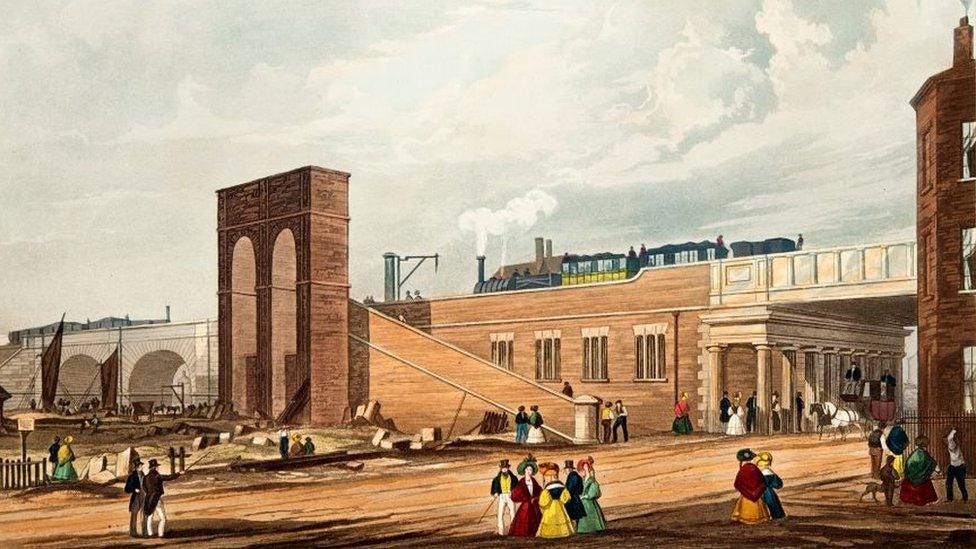
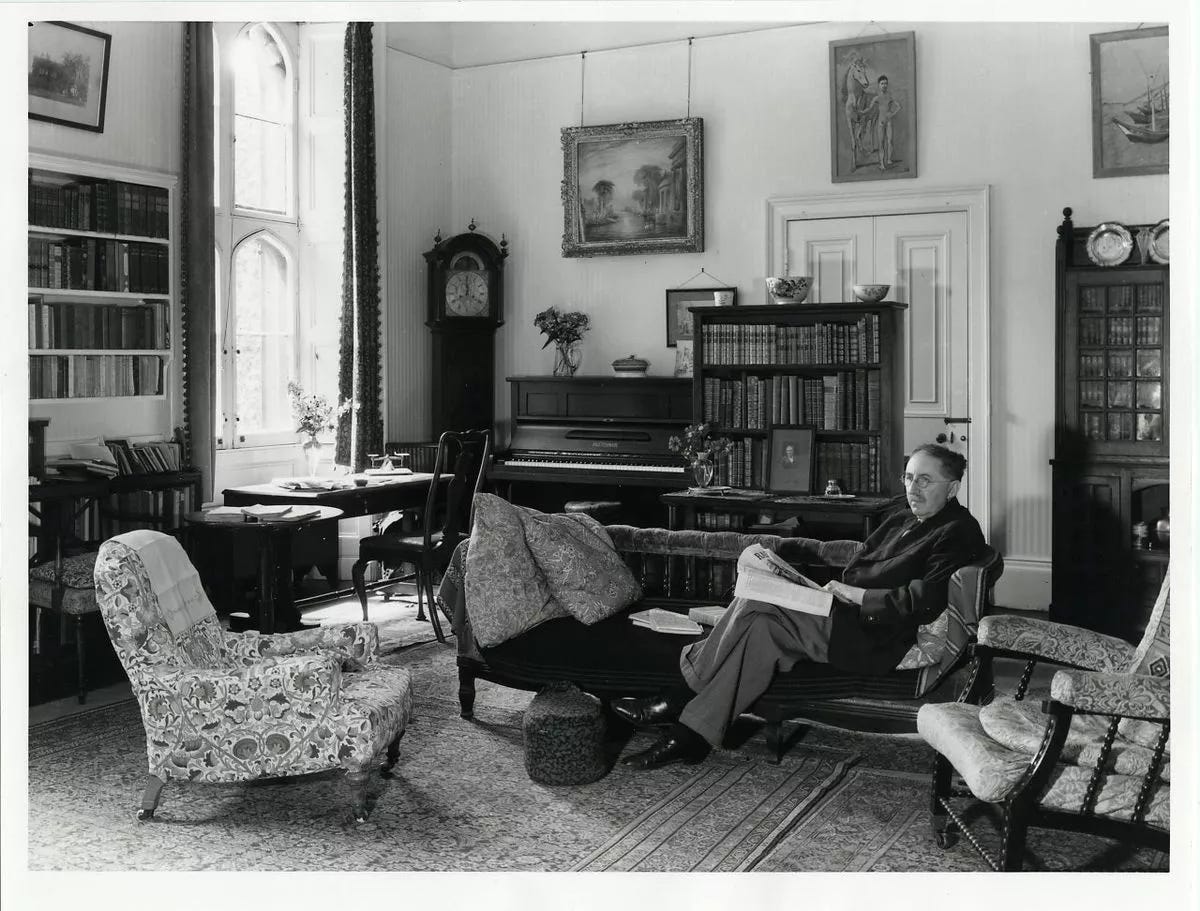

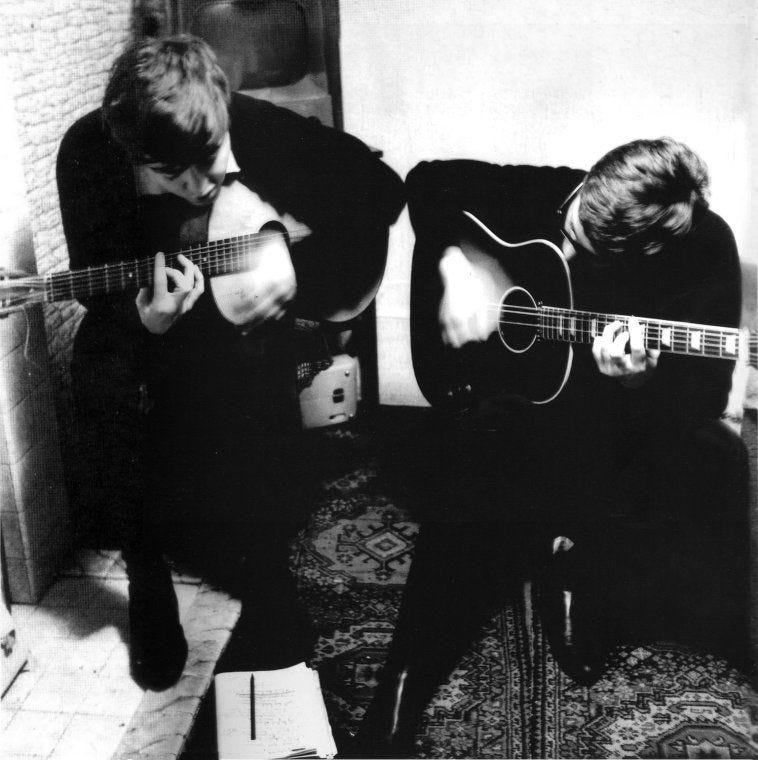
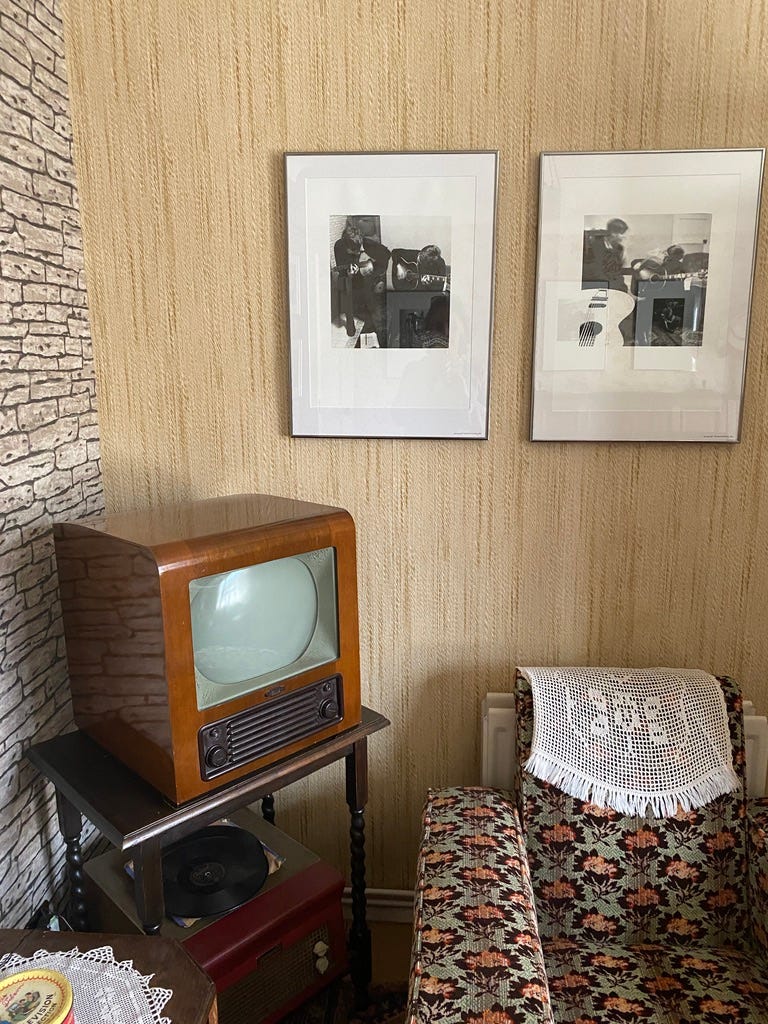
What a lovely long read, thank you so much. I’d like some of those oat biscuits to nibble on……. Your own recipe?
Thank you Jane for another wonderful read. The last hole in the wall oatcakes shop (up Hanley) closed a few years ago I think, but there are apparently still around 40 oatcake bakers in the Potteries, and no sign that younger generations are any less keen on oatcakes than their forebears. I’m told you can even buy a filled oatcake at London’s Borough Market these days, at a price.